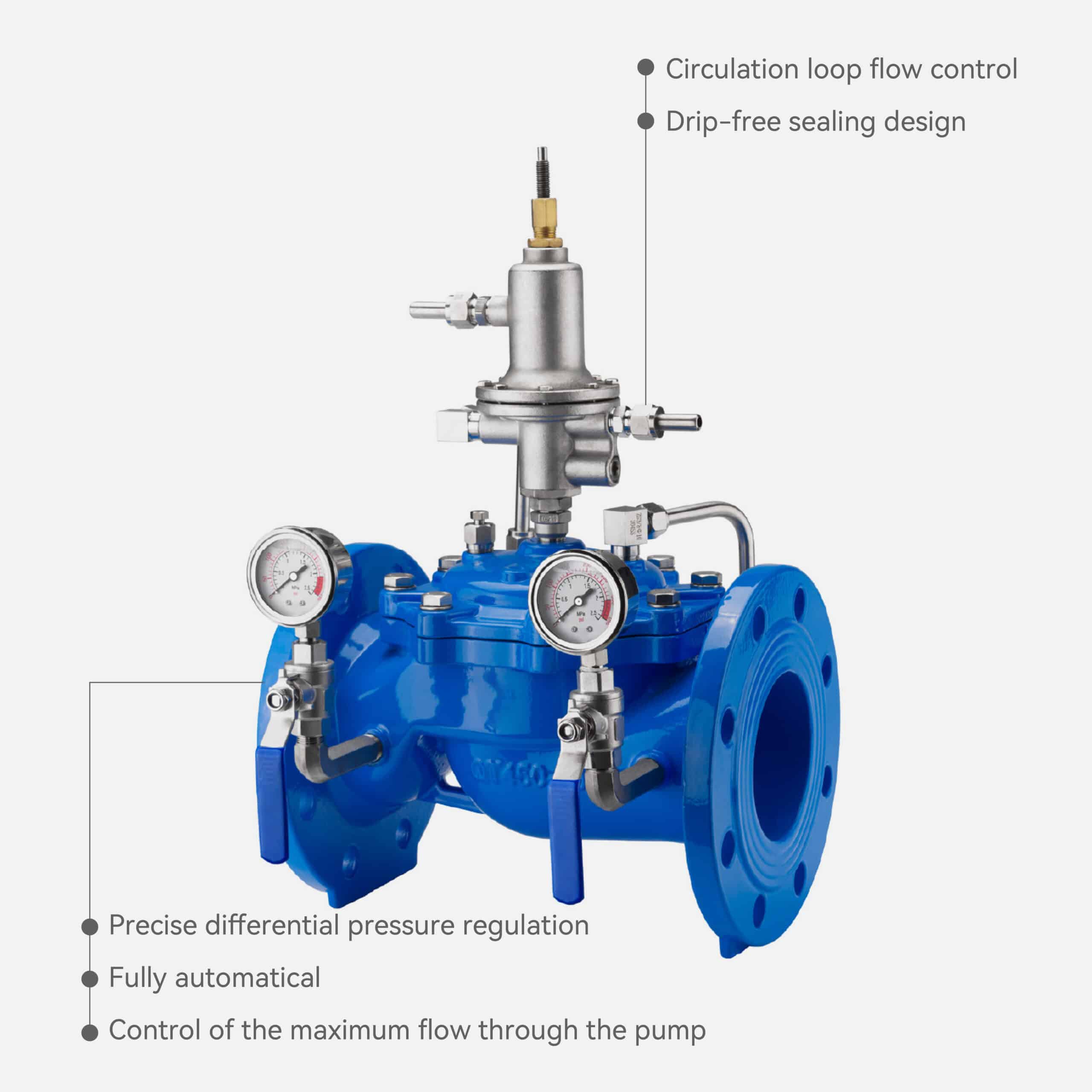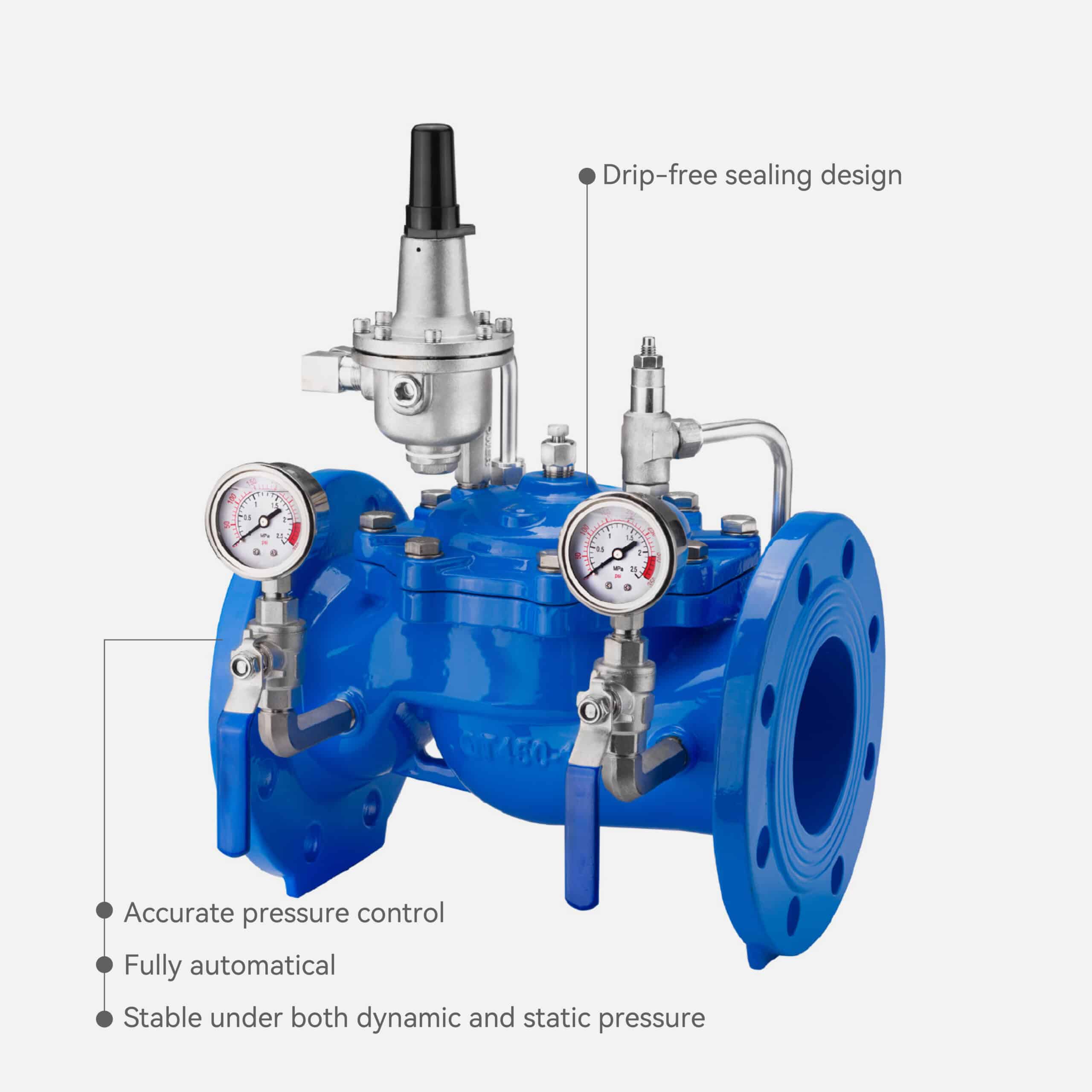Low-Flow Bypass Pressure Reducing Valve
The Low Flow Bypass Pressure Reducing Valve is a hydraulically operated control valve system that consists of a main valve, pilot pressure reducing valve, and a dedicated bypass circuit.
It automatically takes high inlet pressure and makes it a stable outlet pressure.
It keeps the pressure constant even when the flow is low or zero.
The integrated PLBP bypass ensures precise pressure regulation during minimal flow, making it ideal for high-pressure or large-flow-variation water supply systems such as municipal networks and high-rise buildings.

FEATURE
● Drip-free sealing design
● Low noise at low flow
● Accurate Pressure Control
● Fully Automatical
● Wide Flow Range
Low Flow Bypass Pressure Reducing Valve (PLBP Type) VS Adjustable Pressure Reducing Valve
1. Low Flow Bypass Pressure Reducing Valve (PLBP Type)
Complex, designed for systems that need stable pressure control at high and very low flow.
Features
Main valve
Pilot pressure reducing control valve
PLBP threaded bypass pressure reducing valve
Needle valve
Ball valve
Micro strainer
Pressure gauges
How it works
_
The pilot control valve automatically takes high inlet pressure and makes it a stable, lower outlet pressure.
Key thing:
_
It has a low-flow bypass circuit (PLBP).
When the system is running at very low flow, the bypass valve keeps the pressure control stable.
Use it in
_
→ Systems with big flow swings or very low flow (like nighttime supply or end-line systems).
→ High-pressure water supply systems that need a constant static pressure for a long time.
→ Municipal water networks, variable-pressure supply systems, and the main pipes in high-rise buildings.
2. Adjustable Pressure Reducing Valve
Adjustable Pressure Reducing Valve Simple, mainly used to keep the pressure stable in general water supply systems.
Features
● Main valve and a pilot valve system. You set the outlet pressure by adjusting the spring on the pilot valve.
● The outlet pressure stays the same no matter what the inlet pressure is or how much the flow changes.
● Easy to adjust, safe, and reliable, good for general use.
Use it in
_
→ Your house, fire-fighting systems, and industrial water supply networks.
→ Systems where the flow is pretty steady and you don’t need to control the pressure at low flow.
3. The Big Differences
| Thing | Low Flow Bypass Pressure Reducing Valve | Adjustable Pressure Reducing Valve |
|---|---|---|
| Control System | Main valve + pilot valve + bypass valve + needle valve, etc. | Main valve + pilot valve only |
| Low Flow | Stable control at low or zero flow because of the bypass circuit | Can get wonky at low flow |
| Static Pressure | Constant for a long time | Pretty stable, a little variation |
| Use it in | High-pressure, big fluctuation, need it to be constant systems | General water supply systems |
| Cost & Maintenance | More expensive, more stuff | Cheaper, easy to install and keep up |
● If you have a high-pressure system where the flow changes a lot or you run very little flow, get the Low Flow Bypass Pressure Reducing Valve.
● If you have a normal house, fire-fighting, or industrial water system where the flow is steady, get the Adjustable Pressure Reducing Valve.
RELATED PRODUCTS
Full-flow Threaded Branch Pressure Reducing Valve
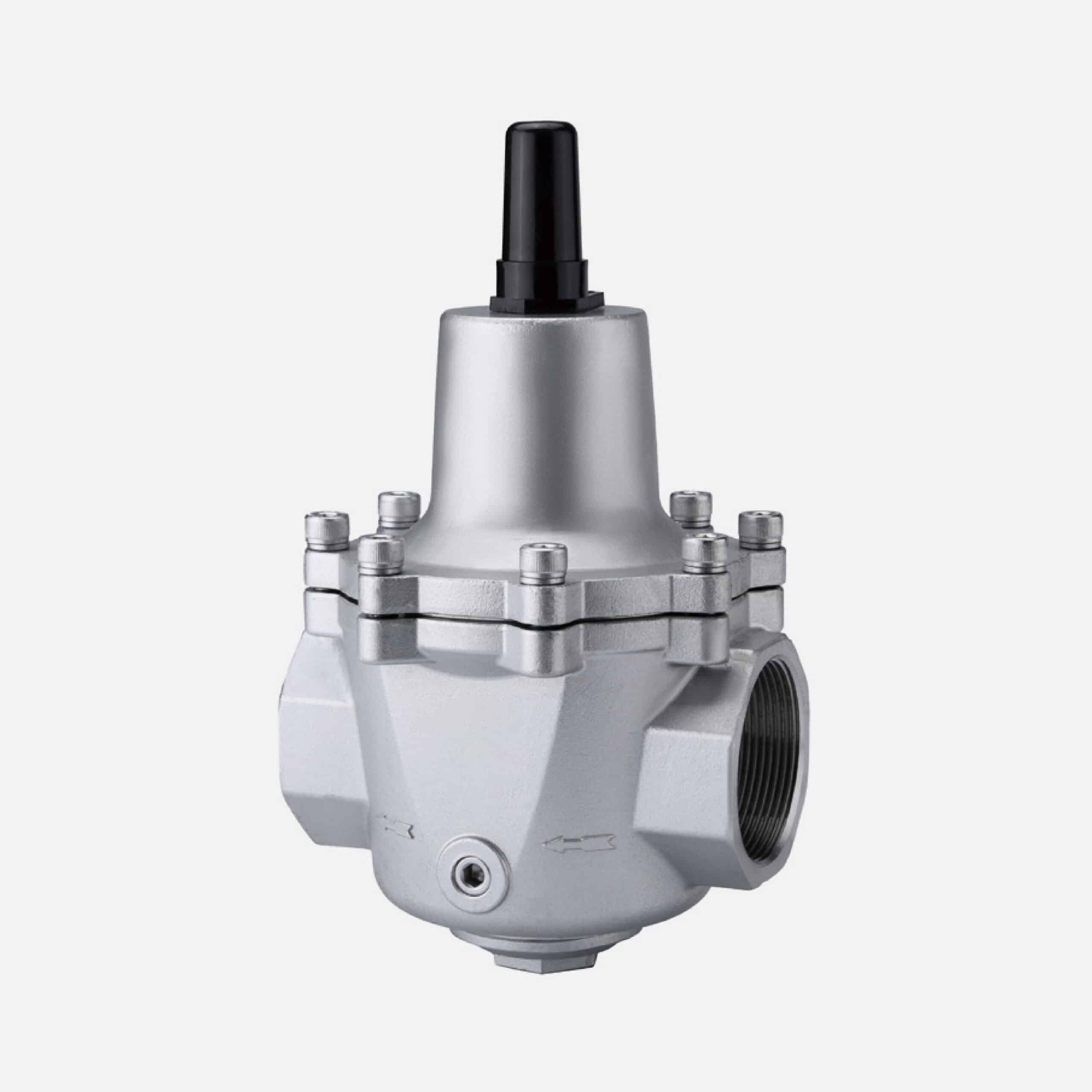
Flow Control Valve
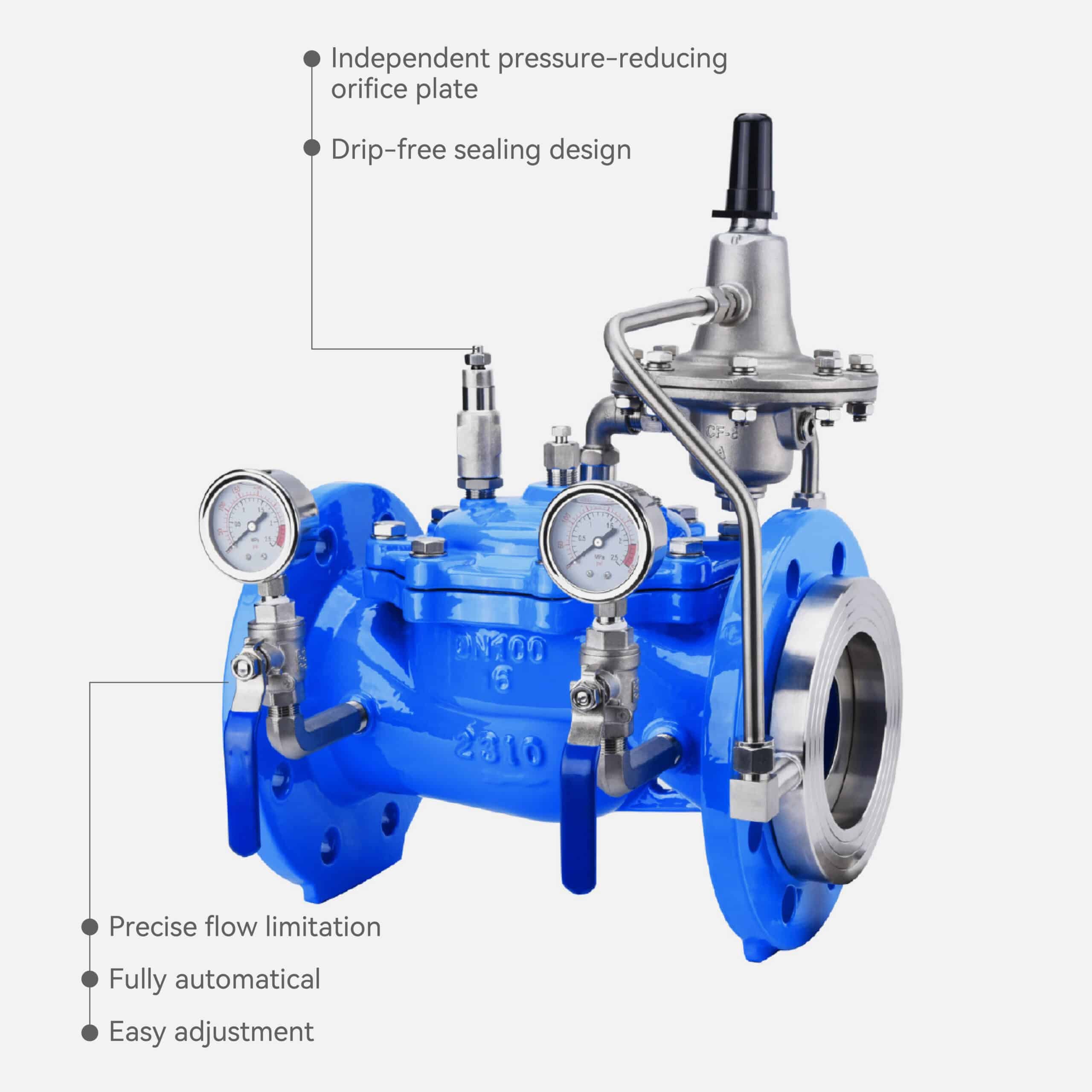
Pressure Relief Valve and Pressure Sustaining Valve
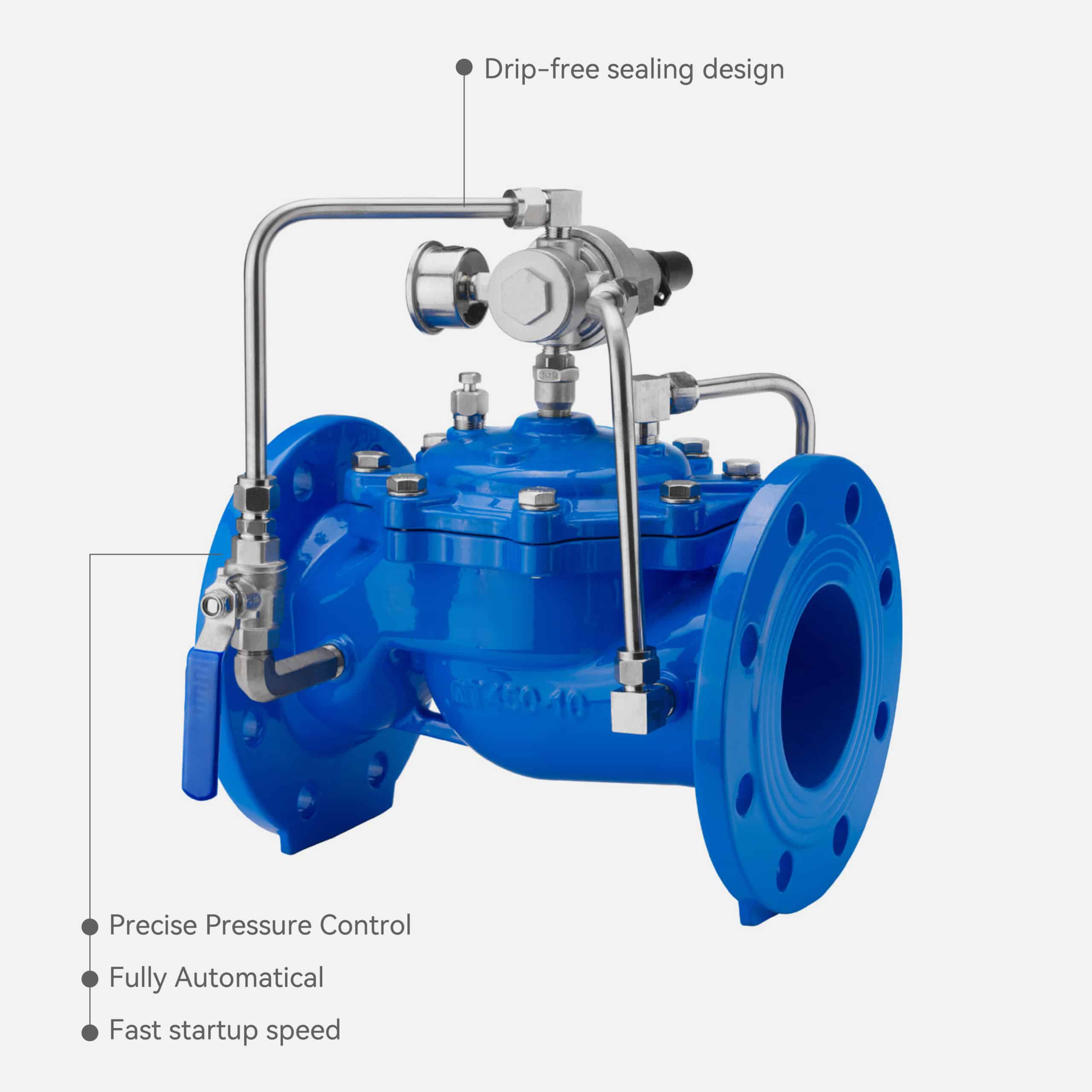
Electric Actuated Pressure Control Valve

Differential Pressure Control Valve
